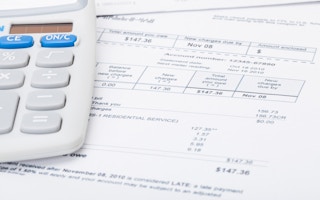The federal government has now achieved passage of its Direct Action plan through the Senate. Some wheeling and dealing with the cross-benches was required of course – but while the government may oppose carbon trading, horse trading appears to be another matter entirely.
It can now return its attention to the future of the Australian Renewable Energy Target (RET). The government’s starting position for negotiation with other parties in the senate apparently includes a major (perhaps 60 per cent) reduction to the 41,000 gigawatt hour target for large renewable energy projects, and a complete exemption for the aluminium industry from contributing towards paying for the scheme.
Our research shows that this could leave households and small business to shoulder the costs for some favoured big energy users.
How we pay for the RET
To understand the potential implications of these proposals, you need to take into account the two key, and opposing, mechanisms by which the RET redistributes wealth between generators and energy users — and, in particular, between different classes of energy users.
On one hand, the increasing amount of wind and solar energy driven by the scheme has placed considerable downward pressure on wholesale electricity prices through the so-called “merit-order effect”. Wind and solar may have major (albeit falling) capital costs; however, their operating costs are very low as there is no need to buy fuel.
This makes them low-cost competitors in our wholesale electricity market, where generators generally offer much of their generation at their operating cost.
On the other hand, RET costs are passed on to consumers in the form of retail electricity price premiums that increase the final prices that we pay.
However, not all energy users pay the same premium. In particular, some favoured, so-called energy-intensive trade-exposed industries such as aluminium smelters have already been largely exempted (at around 75 per cent) from contributing to the costs of the scheme.
These exemptions, of course, make the scheme more costly for all other electricity users.
Falling prices
Our Centre for Energy and Environmental Markets at UNSW Australia has recently published work trying to better understand and quantify these counteracting price drivers.
While previous studies have used models to estimate how the RET will affect electricity prices, we looked at historical wind generation, electricity demand and price data in the National Electricity Market between 2011 and 2013. This allowed us to actually try and measure the price impacts of wind already installed under the RET.
And yes, our findings suggest that when the wind blows, wholesale prices typically fall. We estimate that the merit-order effect of wind alone on the average NEM wholesale price was of the order of a 5-8 per cent reduction over 2011-13.
Note that this doesn’t include the impact of rooftop solar which is also likely contributing to lowering prices. It is hardly surprising, then, that the major fossil-fuel generators oppose the RET — it is increasing competition and lowering wholesale prices.
Passing on the costs
We then tried to measure how much of this price reduction is actually passed on to different users: big and small business, big carbon emitters, and households.
The original principle with the RET was clear — users should contribute to the costs of the scheme according to their level of electricity consumption.
In practice, there are many complexities and little transparency in how costs are passed on, in particular because contracts between retailers and large electricity consumers are commercial-in-confidence.
Better data is available for households and small businesses, because retail tariffs (the price you pay per unit of electricity) are still regulated in some states. However, a growing number of households are on electricity contracts offering some discount from these regulated tariffs.
Still, our findings suggest that small end-users (households and small business) may not have benefited much, if at all, from these lower wholesale market electricity prices to date. This is largely due to state regulators setting tariffs based on the costs of building new power plants, rather than actual energy market costs.
Removing retail price regulation and making the retail electricity market more competitive, as Victoria, South Australia and now NSW have done, may assist in helping households and small business benefit from lower wholesale prices.
However, much depends on the actual competitiveness of these deregulated retail markets and there are reasons for concern here including the significant market power of the large retailers and the lack of interest and engagement many of their customers still have for different electricity options.
Big businesses get a better deal
“
All energy users contributed to paying for the scheme up until 2010 when the then Labor government increased the target but began to provide partial exemptions to some large energy users. Now around 15 per cent of total electricity consumption in Australia is already exempted from contributing to RET scheme costs.
For larger businesses the story is a different one. These customers often have more motivation, expertise and bargaining power when negotiating with retailers on their price.
And for the largest energy users, the story is different yet again. All energy users contributed to paying for the scheme up until 2010 when the then Labor government increased the target but began to provide partial exemptions to some large energy users. Now around 15 per cent of total electricity consumption in Australia is already exempted from contributing to RET scheme costs.
The majority of this exemption is received by the aluminium industry who are, in effect, only contributing around 25 per cent of what they would if the original RET design principle had remained.
The remaining costs are picked up by other energy users. Taking into account the price reductions estimated, the remarkable result is that the RET’s reduction in wholesale prices might actually exceed the remaining costs for aluminium and other exempt industries and actually provide windfall profits.
We have two contradictions here, and both will be enhanced by the government’s proposed changes to the RET. The government is supposedly seeking to reduce electricity price pressure on users, but wants to reduce the target and hence forego likely future wholesale price reductions.
At the same time, the government wants to further exclude the aluminium industry from paying, leaving other energy users to pick up their tab.
How did we end up here?
The realities of policy making of course. Governments are always challenged to deliver policies that provide a broad public good but impact adversely on influential, incumbent stakeholders.
For the energy industry here in Australia, then, the real renewable market right now is in horse trading between powerful stakeholders — public and private — regarding the scheme’s ambition and key design features, while negotiating “mates rates” for the favoured few such as the aluminium industry.
And some policy issues unite prominent stakeholders across the political divide — note, for example, the role of the union movement in driving Labour’s seeming acceptance of a complete RET exemption for aluminium.
Fortunately for these large and powerful stakeholders there are always the politically less powerful mugs to pay over the odds.
More transparency needed
There are certainly opportunities to improve the quality of policy making at this point.
As one example, the aluminium industry has argued for a complete exemption claiming that they haven’t actually benefited from falling wholesale prices because of their long term contracts with electricity retailers.
But you’ll have to take their word on it under current arrangements given the near complete lack of public transparency involved. One important yet unimplemented recommendation of the Climate Change Authority’s 2012 review of the RET was to have the Productivity Commission assess such claims for special treatment. They might well prove more impartial than the politicians currently negotiating behind closed doors.
Still, looking forward, the main game for the future of the Australian renewable energy industry is certainly the size of the target. The government’s own Climate Change Authority has advised them of the need to achieve far greater emission reductions by 2020 than their current 5 per cent target.
And the IPCC’s just released fifth synthesis report is calling for ever more urgent action.
Given the repeal of the carbon price and the questionable effectiveness of the government’s signature emissions reduction fund, the future of the RET may well determine if Australia is capable of achieving emission reductions of the speed and scale required.
Johanna Cludius has been a PhD candidate with UNSW Australia between 2011 and 2014. Iain MacGill is an Associate Professor in the School of Electrical Engineering and Telecommunications at UNSW Australia, and Joint Director of the University’s Centre for Energy and Environmental Markets. This post was originally published on The Conversation. ![]()











